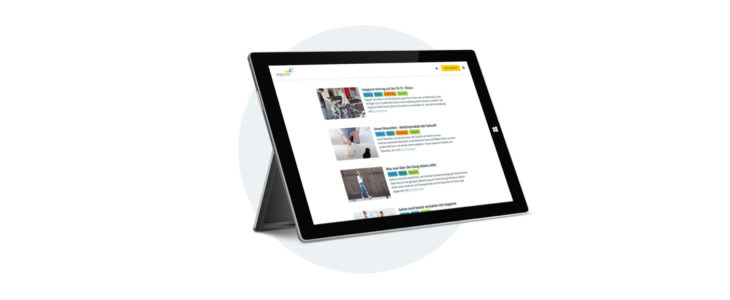Rapid rehabilitation after trochleoplasty with stapp one

After stabilization of the kneecap by a trochleoplasty, immediate training under partial load is traditionally recommended. An innovative medical product now helps to maintain the specified load limits: the intelligent sensor sole from stapp one.
A trochleoplasty is performed to stabilize the kneecap when it is abnormally shaped and hence does not provide the normal boney support for stability, causing the patella to slip out of the groove or dislocate.¹ The aim of this procedure is to enable the affected patients to return to a pain-free everyday life.
Postoperative treatment
In the case of a trochleoplasty, “immediate mobilization […] from the first postoperative day.” ² is recommended. Partial weight-bearing should be performed for at least 3 weeks. After that, an increase of the load “over half the body weight and 4-point gait.” ³ should take place. What often relegates to second place with such indications is the question of how to properly check and review the exercises. Patients, for example, do not know how the prescribed load feels and cannot perform the exercises correctly. Even the therapists cannot determine exactly with the naked eye whether the load limit is reached, exceeded or went below.
Conventional measuring devices such as pressure plates or bathroom scales provide a remedy, but quickly reach their limits during more dynamic exercises where the patient actually takes steps. Here stapp one offers the innovative solution.
Effective partial weight-bearing therapy with stapp one
The intelligent sensor sole from stapp one is the perfect tool for effective training with partial weight-bearing. The soles are simply inserted into comfortable shoes and measure the foot pressure load and the body center of gravity of their wearers. A live-biofeedback is visualized via the wireless connection to the correspondent medical software, from which the required data can be precisely read. Therapists are thus able to monitor and record the training progress of their patients in order to objectively show their progress.
In rehabilitation training with stapp one, exercises that are close to everyday life can be performed optimally. Dynamic assessments such as walking or even climbing stairs (outdoors and indoors) can become part of the training, as stapp one can be used independent of location.
But not only therapists can check the training with stapp one, but also patients have the possibility to control themselves due to the intuitive user interface of the software. This playful approach increases motivation and gives patients a sense of personal responsibility, which has a positive effect on training results. “Motivation refers to the drive to achieve a goal“. 4 And exactly this goal stapp one provides in every session.
Do you have any questions about the use of stapp one? Contact us! We are always at your disposal.
Find us on LinkedIn and become part of our community! We keep you updated about stapp one, medicine and technology!
¹ Ali Rezaei Haddad and Chin Wei Wong. Orthopaedics. Trochleoplasty. University Hospitals Coventry and Warwickshire.2016.
² Nelitz M: Vertiefende Trochleaplastik. Indikation, Technik, Ergebnisse. OUP 2017; 6: 314–318 DOI 10.3238/oup.2017.0314–0318
³ ebd.
4 Johannes S, Hellweg S. Motivation als Grundlage für den Therapieerfolg. neuroreha 2010; 2: 70–78
https://www.arthroskopie-verstehen.de/operative-eingriffe/knie/trochleaplastik/
https://www.physiosalzburg.at/doc/Motivation%20als%20Grundlage%20für%20Therapieerfolg.pdf
https://link.springer.com/article/10.1007/s00104-014-2772-4

